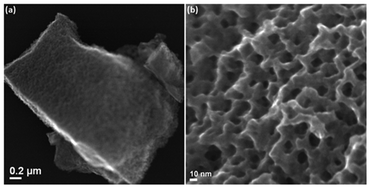Compositional characterisation of metallurgical grade silicon and porous silicon nanosponge particles
Abstract
Porous silicon is generally achieved through electro-chemical etching or chemical etching of bulk silicon in hydrofluoric acid based solutions. The work presented here explores the effect of a chemical etching process on a metallurgical grade silicon powder. It is found that the metallurgical grade silicon particles contain surface bound impurities that induce a porous structure formation upon reaction with the chemical etchant applied. The correlation between the resultant porous structure formed due to the material composition is examined in detail. The elemental composition is determined using a combination of X-ray Photoelectron Spectroscopy and Time of Flight Secondary Ion Mass Spectroscopy. The porous structure is analysed using Transmission Electron Microscopy and Scanning Electron Microscopy. Three samples of the silicon particles analysed for this study include an un-etched bulk silicon powder sample and two samples of chemically etched powder. Pore formation within the particles is found to be dependent on the presence, dispersion, and local concentration of surface bound impurities within the starting powder.


 Please wait while we load your content...
Please wait while we load your content...